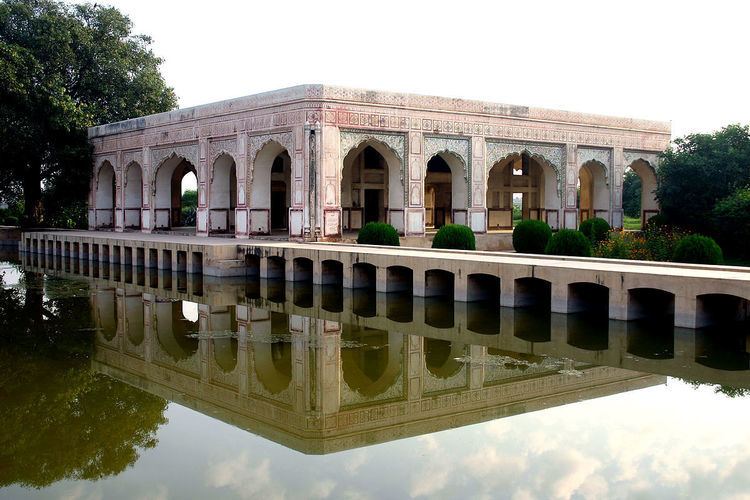Location Lahore, Pakistan Ecclesiastical or organizational status Tomb Architectural type Pavilion Address Lahore 54000, Pakistan Phone +92 334 3353653 Material Sandstone | Affiliation Islam Leadership Kamran Mirza Completed 1540 Opened 1540 Province Punjab | |
 | ||
Architectural styles Islamic architecture, Mughal architecture Similar Jilani Park, Tomb of Jahangir, Wazir Khan Mosque, Shalimar Gardens - Lahore, Lahore Fort | ||
Kamran ki baradari
Kamran ki Baradari is a summer pavilion at Lahore, Pakistan. It was built by Kamran Mirza, a son of first Mughal emperor Babur and a brother of the second Mughal emperor Humayun.
Contents
History
After Babur's death in 1530, Kamran Mirza seized Lahore where he built his own garden in the city, where he built this baradari in 1540, which is the first Mughal structure to be built in Lahore. The baradari, a pavilion, is located on an island in the Ravi River. During its time of construction, it stood on his garden, as the river was "several hundred metres away". The earliest reference to the pavilion dates back to 1860s in a letter written by a British officer named Thomas Thornton.
After the British annexed Punjab in 1849, the pavilion was turned into a tollhouse for boats crossing the river. It is also mentioned as Turgurhwallee Baradari in an 1867 map of Lahore, where it was shown located on the western bank of the river. It was reconstructed in the year 1989 at a cost of 19.6 million rupees (about $1 million).
Features
Like all baradaris, the structure has twelve doors. It is a two-storey pavilion which has 12 columns of vaulted balconies. The pavilion has cusped arches, which are common in buildings built by Mughal emperor Shah Jahan. Research done in 1988 found out that the garden was built using the unit of measurement called Gaz-i-Illahi which was commonly used in Akbar's reign. The pavilion is also the only surviving structure of the garden.
The use of cusped arches has led to a common belief that the pavilion was originally built during Shah Jahan's reign, but local oral sayings have attributed it to Kamran.
